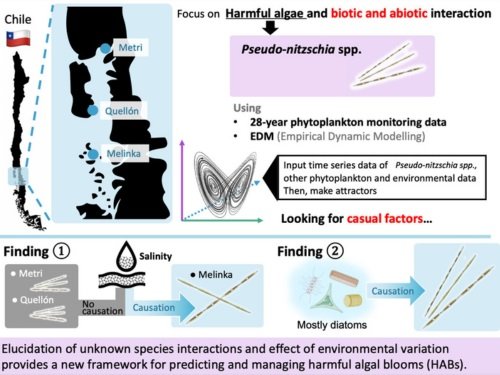Galway, Ireland.- The Marine Institute are lead partners in the Interreg funded project PRIMROSE, which is developing a new system application that helps predict the risk and impact of harmful algal bloom events (HABs) as well as the future impact of climate driven changes on the aquaculture sector.
The PRIMROSE project (2017-2020), includes a consortium of nine partners from across an area known as the Atlantic Arc in Europe. The area is along the Atlantic coast of Western Europe, and members include Ireland, United Kingdom, France, Portugal and Spain.
The project “aims to greatly improve real time data from new satellites and models, advance new inputs of offshore data, aerial surveillance and create a wider availability of in-situ data distributed in an improved manner among partners to generate better forecasts of impending shellfish risks,” explained Joe Silke, Marine Environment and Food Safety Services, Marine Institute.
European aquaculture plays an important part in rural development, directly employing some 85,000 people and producing revenue of some €3 billion per year. Most of this is generated in a relatively small number of coastal regions in the Atlantic Arc. The local contribution of the fisheries sector is significant with the average socio-economic dependency in these regions of 11 percent.
“Although aquaculture has led to the establishment of more than 14,000 local enterprises in the EU, this sector also has common problems, including harmful algal blooms (HAB) -generated toxins, fish killing microalgae, microbial contamination and the looming impacts of climate change. All of these issues result in uncertainty for the producer, ranging from short term production disruption to the medium to long term outlook,” Joe Silke said.
The economic impact of harmful algal blooms (HABs) has been estimated at €919 million per year in the EU. Every year approximately 1.25 million tonnes of products are produced by aquaculture in the EU, much of it in the European Atlantic Arc. “It is therefore critical that marketed shellfish are safe for human consumption and mortalities of farmed fish are minimised in Ireland and Europe.”
The prevention of naturally occurring HAB events is not possible but early warning systems can allow businesses to put in place measures to safeguard health and business operations. Capitalising on the award winning FP7 monitoring programme ASIMUTH, and the improved forecast tool will be further developed by PRIMROSE will add value to the fish, shellfish and algal aquaculture industry. The application system will enable forecasts to be made enabling aquaculture businesses to plan their marketing activities and identify the risks before product is harvested from the water. It will also allow them to decide with more confidence whether to market this product or to hold off because of unacceptable risk.
Stay Always Informed
Join our communities to instantly receive the most important news, reports, and analysis from the aquaculture industry.
In order to grow, innovate and generate jobs in the aquaculture sector, which are typically in rural areas that have lower employment options, the PRIMROSE project provides an opportunity to boost the aquaculture sector by reducing food safety risks.
As part of the PRIMROSE project, it is therefore essential that the consortium continue to engage with the aquaculture industry to explain how the enhanced system can be used to assist them in planning and adapting their harvest schedule.
“The new and improved application system is being developed with an easily understandable traffic-light risk index. We will be reusing valuable data that is already being generated by the consortium partners, that complies with national and EU regulations and reporting procedures will be standardised, and partly automated for an expert evaluator to have information available to make an accurate forecast” Joe Silke explained.
The consortium are also embedded within the national authorities responsible for the monitoring of shellfish biotoxin and microbiological contamination in each of their countries, and PRIMROSE are therefore are well placed to provide advice to policy makers, risk regulators and food safety authorities.
Source: PRIMROSE
Editor at the digital magazine AquaHoy. He holds a degree in Aquaculture Biology from the National University of Santa (UNS) and a Master’s degree in Science and Innovation Management from the Polytechnic University of Valencia, with postgraduate diplomas in Business Innovation and Innovation Management. He possesses extensive experience in the aquaculture and fisheries sector, having led the Fisheries Innovation Unit of the National Program for Innovation in Fisheries and Aquaculture (PNIPA). He has served as a senior consultant in technology watch, an innovation project formulator and advisor, and a lecturer at UNS. He is a member of the Peruvian College of Biologists and was recognized by the World Aquaculture Society (WAS) in 2016 for his contribution to aquaculture.


